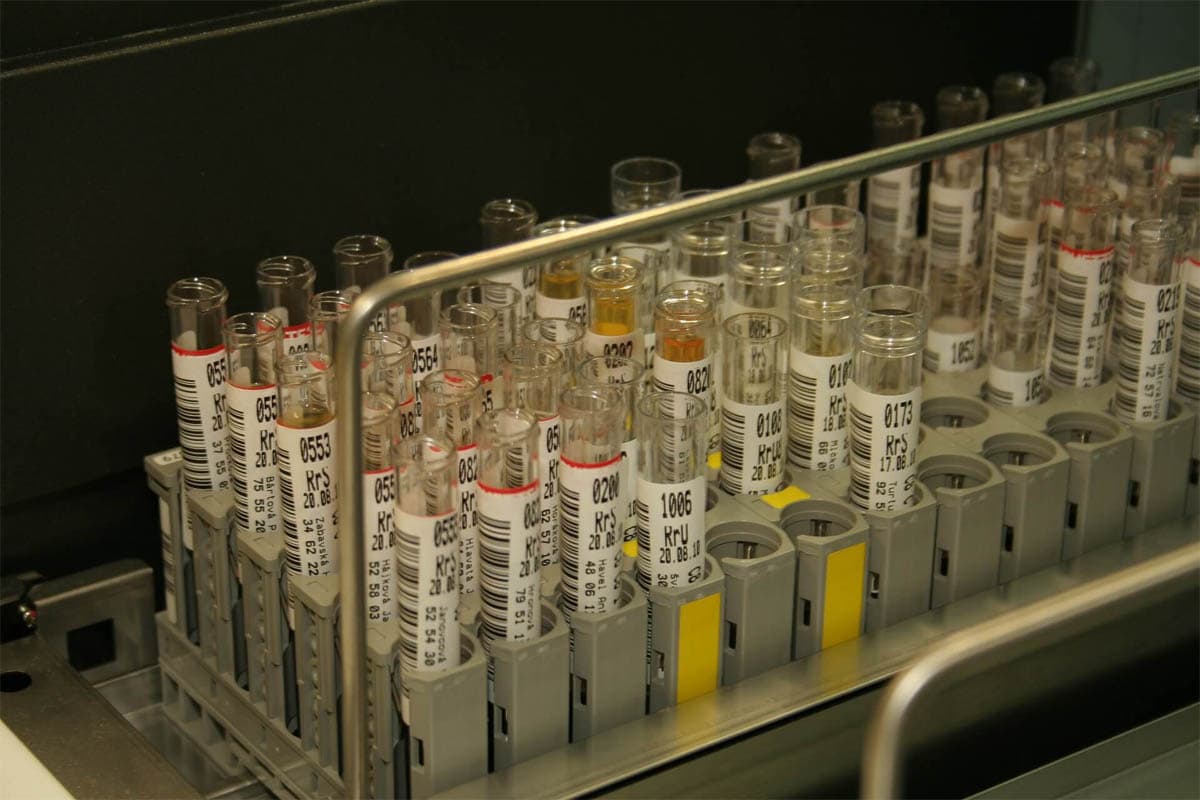What is a urinalysis test?
A urinalysis test (also known as UA) is a series of physical and chemical tests performed on urine to provide the clinician with important information on the cat’s physical health.
The urine sample is evaluated for its physical properties which include specific gravity, colour and clarity, and biochemically for pH, protein, glucose, bilirubin, and ketones, and microscopically for blood cells, crystals, casts (solid, tubular deposits) and bacteria. A urinalysis can detect diseases such as diabetes, kidney disease and infections of the urinary tract.
Visual examination:
Turbidity (cloudiness) and the colour of the urine, normal urine is a clear amber/yellow colour. Abnormal urine may be cloudy or contain blood.
Specific Gravity (SG):
This test measures how well the kidneys can concentrate urine and the number of substances dissolved in the urine. The test measures the weight of the urine compared to the same quantity of water. The higher the specific urine gravity, the more solid material is dissolved in the urine.
Dipstick analysis:
A chemical test strip looks for blood, glucose, protein, bilirubin, and ketones in the urine.
| White blood cells (pyuria) | The presence of white blood cells may indicate a urinary tract infection, kidney disease or cancer. Normally white blood cells are not present in the urine. |
| Red blood cells (hematuria) | As with white blood cells, normally, red blood cells are not present in the urine. Their presence may be indicative of inflammation, disease, injury to the ureters, bladder or urethra. |
| Protein (proteinuria) | Protein is not normally found in urine, the results are viewed in conjunction with the urine specific gravity. Protein in dilute urine has more significance than protein in concentrated urine. Some causes of protein in the urine include inflammation, hemorrhage or kidney disease. |
| Glucose (glucosuria) | Glucose is a type of sugar the body uses as an energy source. There should be no glucose in the urine. A common cause of glucose in the urine is diabetes. |
| Bilirubin (bilirubinuria) | Bilirubin is an orange bile pigment produced by the breakdown of heme, which the liver helps to excrete. The presence of bilirubin in the urine may indicate liver disease or hemolysis (destruction of red blood cells), renal disease, Feline Hepatic Lipidosis and FIP. |
Ketones |
There should be no ketones in the normal cat. These are produced when the body uses fats, rather than glucose for energy. |
| Urine pH | A measure of the acidity/alkalinity of the urine. Normal pH is around 6 – 7. This can vary depending on diet, medications, and disease. Cats tend to have a slightly acidic pH. |
Microscopic examination:
A sample of urine is centrifuged and the sediment is examined under a microscope for; crystals, red blood cells, white blood cells, casts (solid, tubular deposits), bacteria and yeasts.
- White blood cells (pyuria) – Normally white blood cells are not present in the urine. The presence of white blood cells may indicate a urinary tract infection, kidney disease or cancer.
- Red blood cells (hematuria) – As with white blood cells, normally, red blood cells are not present in the urine. Their presence may be indicative of inflammation, disease, injury to the ureters, bladder or urethra.
- Casts (cylindruria) – These are cylindrical structures formed by mucoprotein congealing within renal tubules (tiny tubes in the kidneys). These can be made of different types of material including red blood cells, white blood cells, fatty substances, renal tubular epithelial cell casts or protein. These casts can provide a clue about the type of disease which your cat may have.
- Crystals (crystalluria) – Several different types of crystal may be found in urine. The most commonly found crystals are struvite and calcium oxalate. The presence of these in the urine isn’t a definite diagnosis of urolithiasis. A few specific types, however, can be important in certain clinical situations.
- Bacteria – Large amounts of bacteria indicate an infection.
Taking the urine sample:
There are several methods your veterinarian may use to obtain a urine sample.
Catheterization – This involves inserting a tube into the urethra. It may be necessary to sedate the cat for this.
Cystocentesis – This is the use of a syringe and needle inserted through the abdominal wall to obtain uncontaminated urine directly from the bladder. If the veterinarian needs a sterile sample, this is the best method to use.
Free catch – This involves the pet’s owner obtaining a sample of urine from home. The advantage is that the sample can be obtained without a trip to the veterinarian. Unfortunately, it won’t be sterile.

